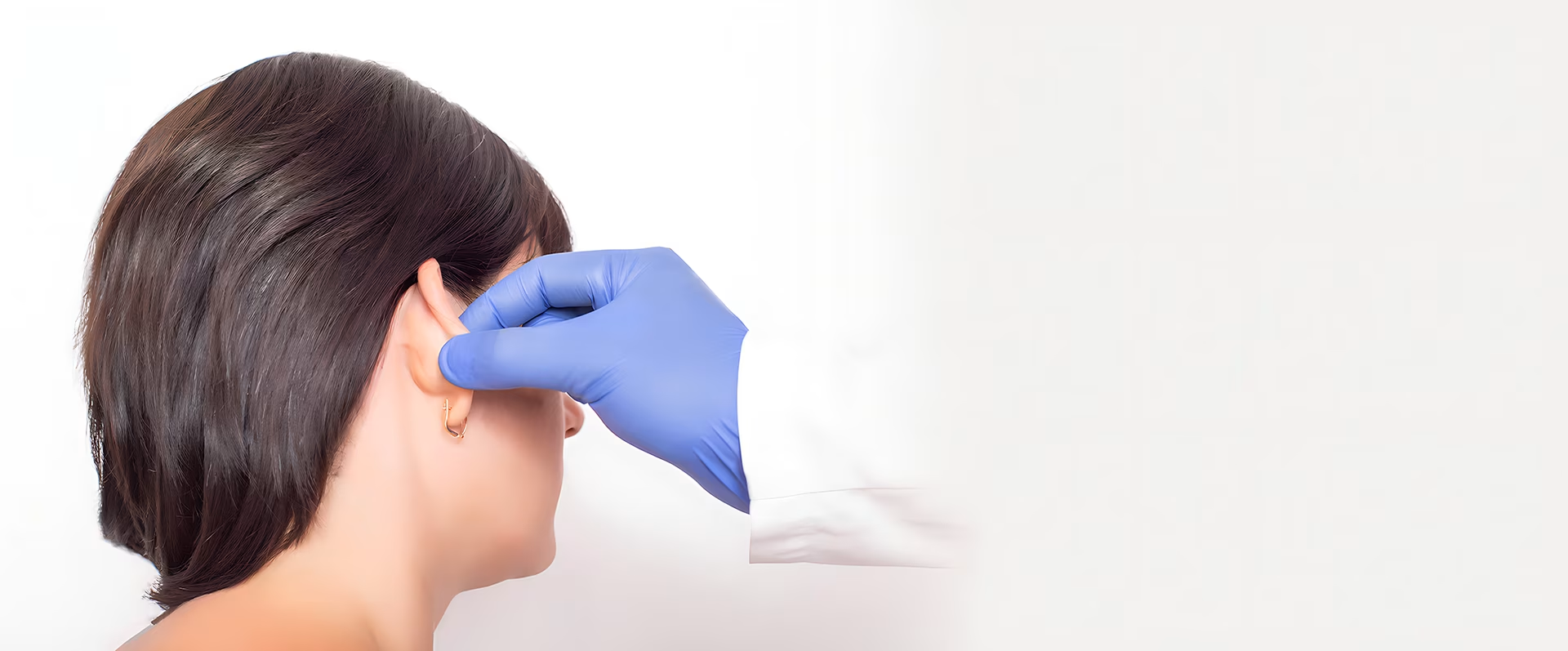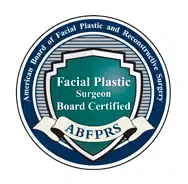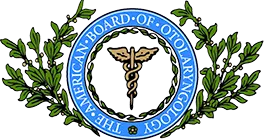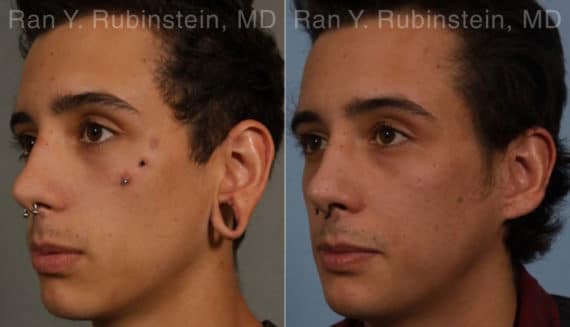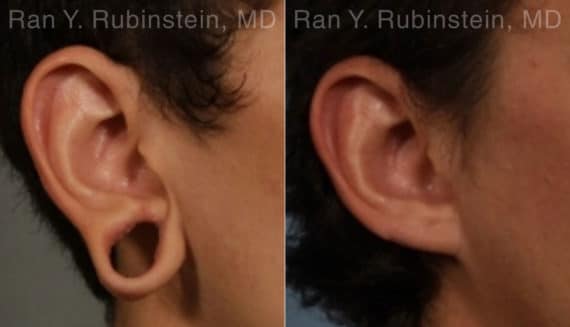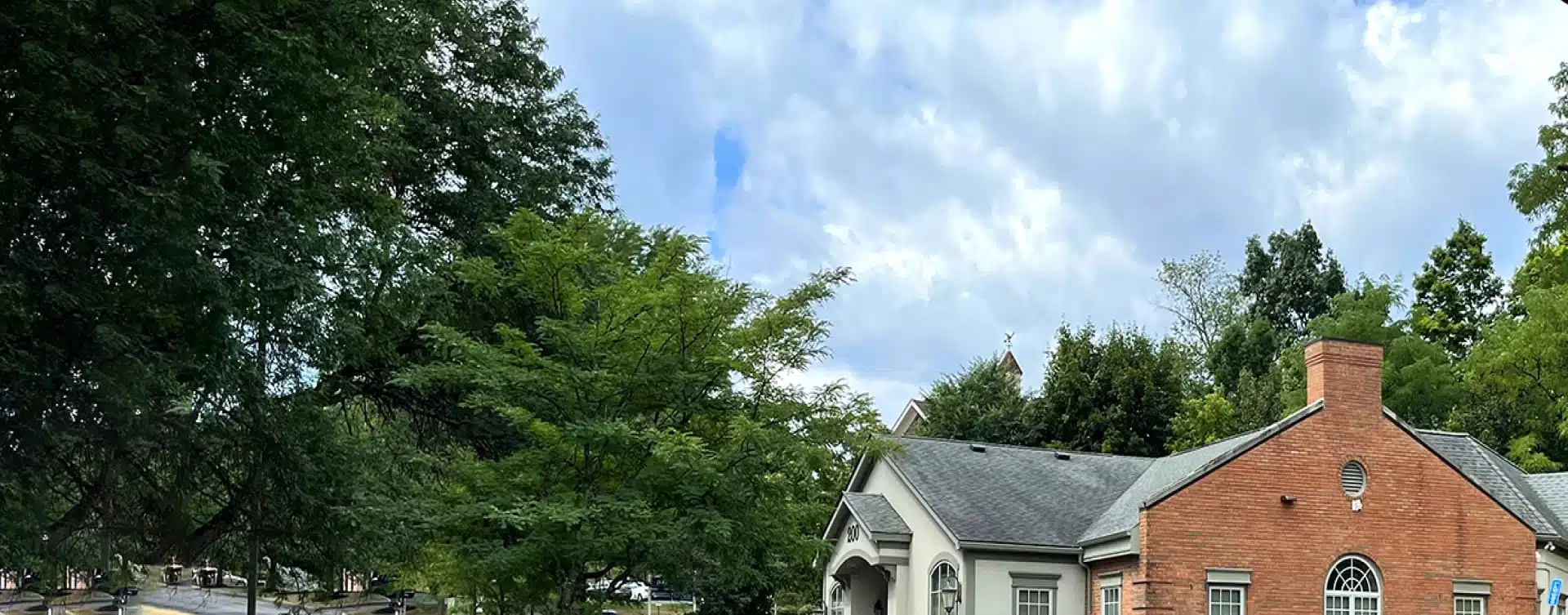Enjoy the Lasting Benefits of Earlobe Restoration
Earlobe Repair Surgery is a beacon of hope for those facing issues like stretched piercing holes and split earlobes. Dr. Rubinstein’s precise and assured touch brings not just cosmetic relief, but a holistic revival of one’s facial symmetry, elegance, and confidence.
Earlobe Restoration by Dr. Rubinstein
When it comes to plastic surgery, most people don’t consider the role earlobes play in their overall appearance—until they have to. Earlobe repair may be needed due to accident, injury, or holes left by heavy earrings and ear gauges. If you’re feeling self-conscious about torn, damaged, or stretched-out earlobes, Dr. Ran Rubinstein can help you restore your confidence with an earlobe repair at Laser and Cosmetic Surgery Specialists in New York.
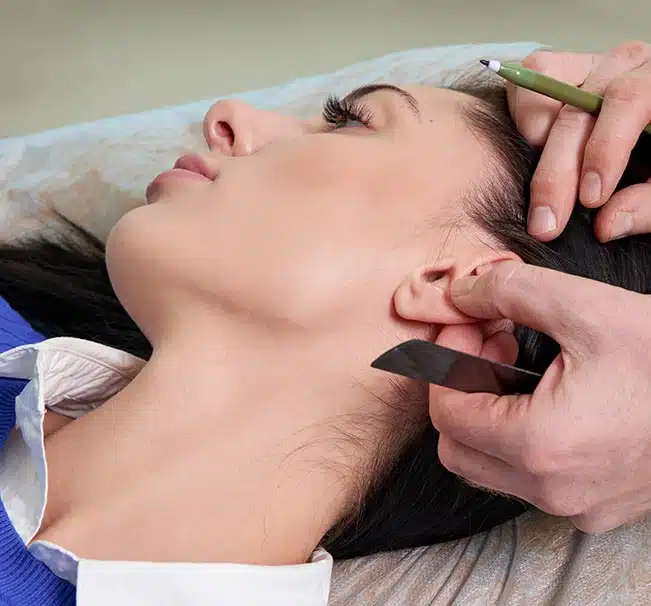
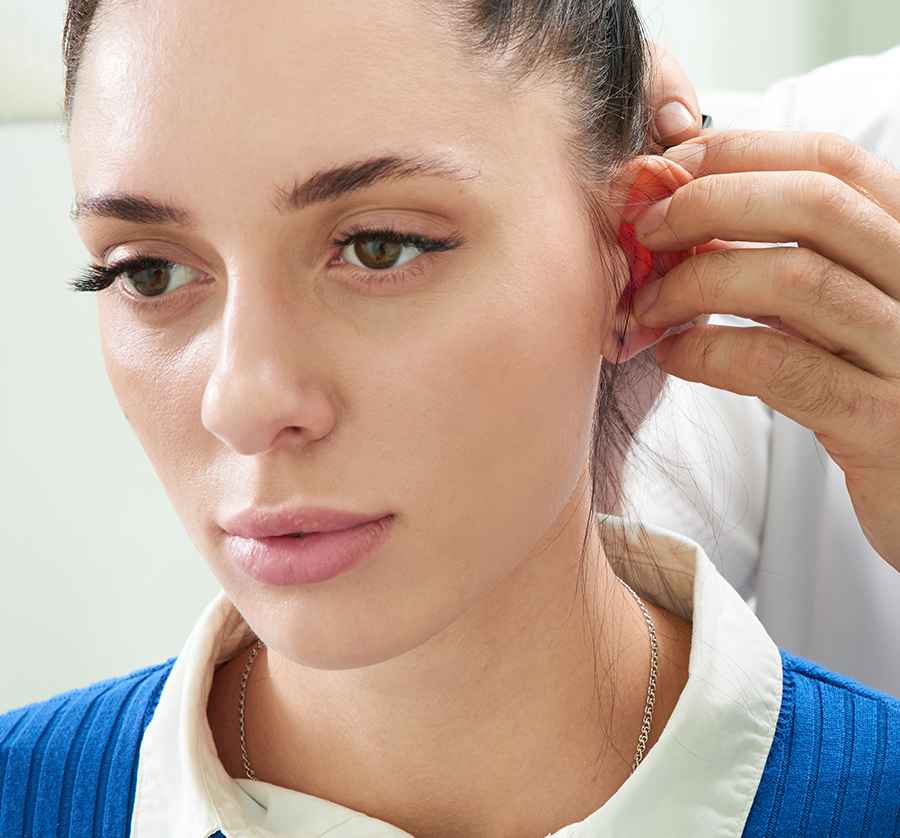
Stretched or Torn Earlobe Repair by Dr. Rubinstein
Many people consider cosmetic or corrective surgery for their facial areas such as the eyes, lips, and neck. However, over time, people can develop damaged, disfigured, or stretched earlobes, as well.
Earlobes are especially vulnerable to injury because they don’t have bone or cartilage for support; they are entirely skin and fat. Wearing heavy earrings, wearing gauges, and simple everyday trauma can cause damage and make earlobe repair surgery necessary. Sometimes even a seemingly small disfigurement can be very bothersome.
Stretched and torn ear lobes can quickly, easily, and safely be repaired with a minimally invasive procedure. A wide range of common ear lobe issues can be addressed, and afterward, you will be more confident with the look of your ears.
The cosmetic process used for earlobe repairs works with the skin and underlying fat layers without needing implants or other more invasive treatments.
Torn Earlobe Repair Consultation and Procedure – Newburgh, NY
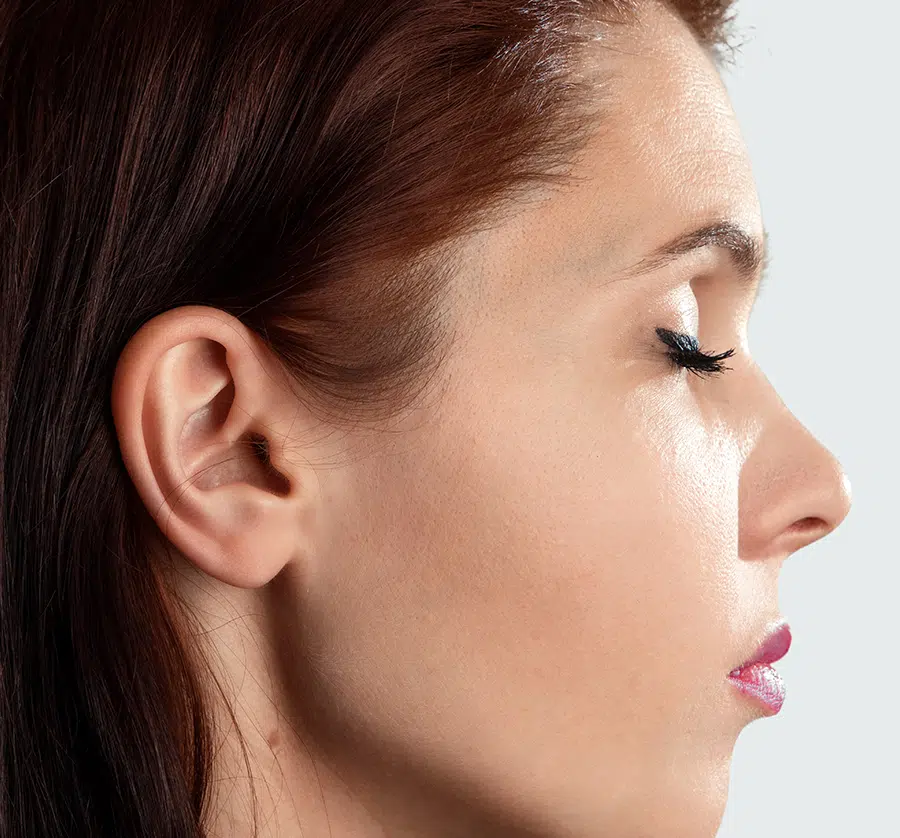
Dr. Rubinstein offers earlobe repair consultations for men and women. He has extensive surgical experience in helping patients with the shape, appearance, and function of their earlobes (patients can wear earrings again in three months).
There is no required age range for earlobe procedures, however, health issues such as diabetes can complicate healing. Smoking might also delay wound healing.
During your consultation, Dr. Rubinstein will do an examination and evaluate the earlobe to check the size of the hole (or tear) and to see the condition of the surrounding tissue. After the evaluation, he will determine which earlobe repair procedure is right for you.
You will be able to discuss all of the details of the procedure and ask any questions before deciding to move forward with the surgery. Dr. Rubinstein might also cover other cosmetic treatment options, as earlobe repair surgery can be easily combined with many other facial procedures.
Start Your Journey to Success, Don’t Wait More!
Schedule a consultation with Dr. Rubinstein
Overview of an Earlobe Repair Procedure
At Laser Cosmetic & Surgery Specialists in Newburgh, earlobe surgeries are commonly performed to address stretched piercings or complete tears. Dr. Rubinstein, a board-certified facial plastic surgeon with expertise in facial surgery, tailors each procedure to meet the unique needs of the patient. Evaluation during the consultation determines the extent of repair required, whether it’s a partial correction or a more complex reconstruction for a fully torn earlobe. Utilizing local anesthesia ensures patient comfort throughout the process, whether it’s a minor correction or a more extensive reconstruction.
Restore your Earlobes to a natural shape
For earlobe repair, surgical techniques are employed to restore a natural appearance. This may involve excising excess tissue, reshaping the lobe, and employing sutures to achieve optimal results. Dr. Rubinstein may also recommend hyaluronic acid fillers to enhance volume and reinforce the repair, ensuring a durable outcome that reduces the risk of future complications.
In gauge repair cases, a meticulous approach is taken to reshape the earlobe and suture it for optimal healing. While the procedure typically takes about an hour, variations in surgery time may occur depending on the extent of repair needed. With the expertise of board-certified plastic surgeons like Dr. Rubinstein, earlobe restoration offers patients a simple yet effective solution, providing natural-looking results and minimal downtime for recovery.

Surgical Earlobe Repair Recovery
Earlobe repair surgery that includes additional treatment areas such as the cheeks, chin, jaw, or neck is naturally more involved and the recovery time on these will vary. But, for an isolated earlobe repair, the recovery time is relatively short.
Dr. Rubinstein will prescribe pain medication, if necessary, for the first week or so, and his team will follow up with each patient to ensure proper healing. Normally, no bandages are necessary and stitches are removed in about a week. Earlobes have an ample blood supply which allows for better results and a rapid recovery.
Recovery is usually quick and easy, with minimal post-procedure restrictions needed. Patients are advised to keep the repaired earlobe away from water; avoid showers for 24 hours and refrain from submerging the ear in the bathtub, hot tub, or pool for up to 6 weeks. Patients are also asked to avoid strenuous exercise for 4 weeks. Most patients are cleared to return to work on the same day or the next day.
You will be asked to follow Dr. Rubinstein’s detailed post-operative instructions to promote healing from your earlobe repair surgery.
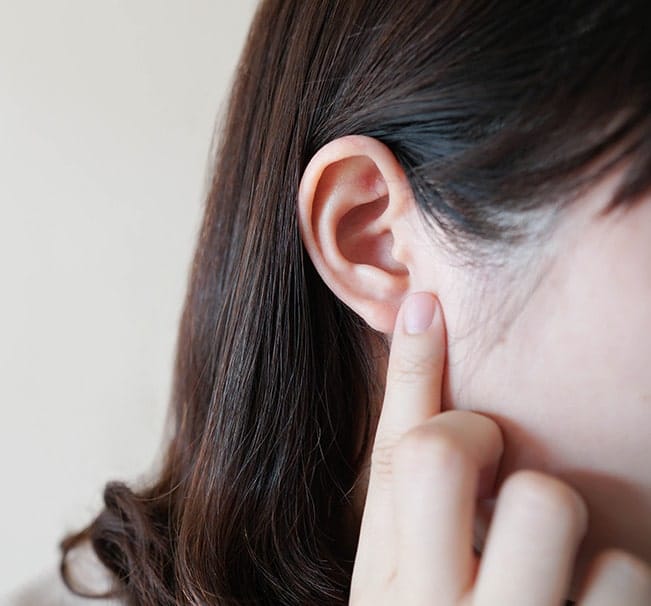
Earlobe repair Side Effects
Earlobe repair surgery typically involves minor incisions and is considered a simple, minor procedure in the realm of cosmetic surgery. As such, side effects such as swelling and bruising are generally minimal compared to more invasive procedures. While temporary discomfort, redness, or bruising may occur post-surgery, the risks of bleeding, scarring, or infection are relatively low. Nonetheless, it’s important to follow post-operative instructions carefully to optimize healing and minimize any potential complications.
Earlobe Repair Procedure Results
Following earlobe repair surgery, patients typically experience immediate improvements in appearance, as the procedure often does not require bandages upon completion. While initial swelling and bruising may occur, these gradually subside over time, revealing natural-looking results as the healing process progresses.
To maintain optimal outcomes, patients are advised to refrain from wearing heavy earrings or ear gauges, particularly during the initial recovery period. Dr. Rubinstein recommends waiting at least three months before considering re-piercing the ears and suggests opting for lightweight earrings to minimize stress on the newly repaired earlobes. Ensuring proper placement of re-piercings, at least 3mm away from the scar tissue, is essential for long-term success. By adhering to these post-operative guidelines, patients can enhance the longevity of their earlobe repair surgery results and achieve the desired aesthetic appearance.

Why Choose
Dr. Rubinstein
- Dr. Rubinstein is one of the top facial plastic surgeons in New York & New Jersey.
- He is double board certified by the American Board of Facial Plastic Surgery and the American Board of Otolaryngology-Head and Neck Surgery.
- Dr. Rubinstein has been in both private and academic practice for over 20 years.
- He is also an active member of the American Society for Laser Medicine & Surgery.
- Clinical Professor at New York Presbyterian Hospital.
